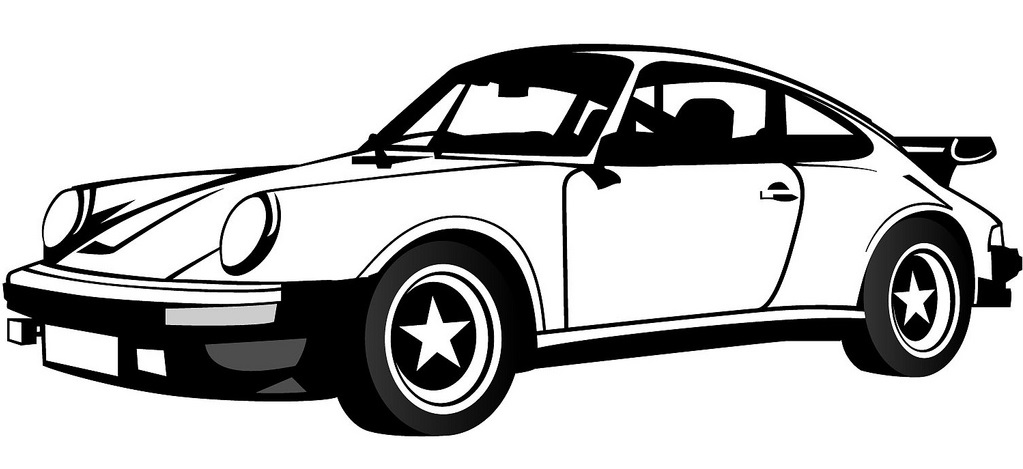A brief history of
Triumph
Introduction
The car manufacturer Triumph has made an important impact on the automotive world. In this article we will give a brief but detailed history of the Triumph marque.
We will look at the origins of Triumph looking at who, why, where and when Triumph was founded. We'll look at the design of the iconic Triumph logo and what are some the more significant Triumph models.
We'll take a glance at what racing history the Triumph has and who some of the most important people have been in the history of Triumph over the years.
Who, where, when and why was
Triumph founded?
The car manufacturer Triumph has a rich history that dates back to the early 20th century. The company was founded by Siegfried Bettmann, a German immigrant, in 1885. Originally, Triumph was established as a bicycle manufacturer in Coventry, England. However, the company expanded its operations and ventured into the production of motorcycles before eventually entering the automobile market.
The Triumph Motor Company, as it became known, was officially founded in 1923. This marked the beginning of Triumph's journey as an automotive manufacturer. The company's headquarters were located in Coventry, an industrial city known for its strong presence in the British automotive industry. Triumph aimed to capitalize on the growing demand for affordable and reliable cars in the post-World War I era.
The decision to enter the automobile market was driven by several factors. Firstly, Triumph recognized the potential for growth in the automotive industry and sought to diversify its product range. Additionally, the demand for personal transportation was increasing, fueled by rising prosperity and the desire for mobility. By entering the car market, Triumph aimed to offer affordable yet stylish vehicles to a broader consumer base.
Triumph's first car, the Triumph 10/20, was introduced in 1923. It was a small and practical car designed to cater to the needs of everyday motorists. The company quickly gained a reputation for producing reliable and well-engineered vehicles, which contributed to its early success. Triumph's commitment to quality and innovation allowed it to compete effectively in the market.
Over the years, Triumph continued to expand its lineup, introducing a range of models that catered to different market segments. One notable milestone for the company was the launch of the Triumph Herald in 1959. The Herald was a compact and affordable car that featured a distinctive design and innovative engineering solutions. It enjoyed considerable success and became one of Triumph's most popular models.
Triumph's focus on performance and sportiness became evident with the introduction of the Triumph Spitfire in 1962. The Spitfire was a two-seater convertible sports car that offered an exhilarating driving experience at an affordable price. It quickly became an icon of British motoring, epitomizing Triumph's commitment to producing exciting and accessible sports cars.
Unfortunately, Triumph faced financial difficulties in the 1970s due to various factors, including labor disputes, increased competition, and the impact of the global oil crisis. The company underwent multiple ownership changes and restructuring efforts in an attempt to stay afloat. However, despite these challenges, Triumph continued to produce cars until the early 1980s.
Today, while Triumph no longer produces cars, it remains a well-known brand in the motorcycle industry. The Triumph Motorcycles company, a separate entity from the original Triumph Motor Company, carries on the legacy of the brand, producing a range of motorcycles that embody the spirit of innovation and performance.
Triumph's founding represents the entrepreneurial spirit and ambition to diversify and succeed in the evolving automotive industry. From its humble beginnings as a bicycle manufacturer to its emergence as an automotive brand, Triumph's legacy lives on in the hearts of enthusiasts and its impact on the British automotive industry.
How did the
Triumph logo originate?

How did the Triumph logo originate?
The logo of the car manufacturer Triumph has evolved over the years, reflecting the company's growth and changing identity. In its early years, Triumph used a simple and straightforward logo that featured the company name in a stylized font. The logo embodied a sense of confidence and professionalism, establishing Triumph as a serious player in the automotive industry.
As Triumph expanded its lineup and ventured into different market segments, the company introduced a new logo that became iconic and synonymous with the brand. This logo featured a circular emblem with a bold "T" at the center, surrounded by a laurel wreath. The laurel wreath symbolized victory and triumph, aligning with the company's name and embodying its spirit of success and achievement. The elegant and timeless design of the logo conveyed a sense of prestige and quality, further enhancing Triumph's reputation as a manufacturer of desirable automobiles.
In later years, the Triumph logo underwent further refinements while still retaining its core elements. The laurel wreath was simplified and modernized, and the "T" inside the circle was given a more contemporary and streamlined appearance. These updates reflected Triumph's commitment to staying relevant and appealing to a new generation of car buyers.
Today, the Triumph logo represents the enduring legacy of the brand in the motorcycle industry. While the logo is no longer associated with the production of cars, it continues to be a symbol of excellence, craftsmanship, and the pursuit of adventure on two wheels. The logo serves as a reminder of Triumph's heritage and its ongoing commitment to innovation and performance in the motorcycle world.
What are some of the significant
Triumph models?
Triumph has produced several significant models throughout its history, with a particular focus on higher performance vehicles that embody the brand's commitment to exhilarating driving experiences. From classic sports cars to modern roadsters, Triumph has created a legacy of dynamic and stylish automobiles that have captured the hearts of enthusiasts around the world.
In the early years of its automotive journey, Triumph introduced the TR series, which included iconic models such as the Triumph TR2 and TR3. These sports cars, produced in the 1950s, featured sleek and aerodynamic designs, powerful engines, and nimble handling. The TR series quickly gained popularity among drivers seeking a thrilling and engaging driving experience.
Continuing into the 1960s, Triumph unveiled the Triumph GT6, a compact and sporty coupe. The GT6 offered a sleek and modern design, reminiscent of the era's iconic fastback coupes. With a powerful inline-six engine and a lightweight body, the GT6 delivered impressive performance and agility, making it a favorite among driving enthusiasts.
In the 1970s, Triumph introduced the TR7, a wedge-shaped sports car that reflected the era's contemporary design trends. The TR7 featured a bold and distinctive appearance, with a low-slung profile and pop-up headlights. Although the TR7 faced mixed reviews at its launch, it later gained a cult following, particularly in the rally and racing scene.
In the 21st century, Triumph revived its legacy by introducing the Triumph Spitfire and GT6. These modern iterations paid homage to the classic models of the past while incorporating modern engineering and design advancements. The new Spitfire and GT6 offered improved performance, enhanced safety features, and a touch of nostalgia for enthusiasts who appreciated the original models.
Furthermore, Triumph's recent focus on higher performance models can be seen in the introduction of the Triumph TR8 and the Triumph Daytona. The TR8, produced in the 1980s, was a powerful V8-powered sports car that showcased Triumph's dedication to performance. The TR8 boasted impressive acceleration and a thrilling driving experience.
More recently, the Triumph Daytona has taken center stage as the company's flagship sportbike. With its aggressive styling, powerful engine, and advanced technology, the Daytona represents Triumph's commitment to producing high-performance motorcycles that deliver exceptional speed, handling, and rider engagement.
Throughout its history, Triumph has demonstrated its ability to create cars and motorcycles that capture the imagination of enthusiasts and provide exhilarating performance. The brand's commitment to innovation, craftsmanship, and driving enjoyment has solidified its reputation as a leader in the higher performance segment.
From the classic sports cars of the mid-20th century to the modern roadsters and motorcycles of today, Triumph has left an indelible mark on the automotive industry. The company's significant models have become icons of style and performance, continuing to inspire a new generation of drivers and riders.

One of Triumph's Most Iconic Models
Who are some of the most important people in
Triumph's History
Triumph's success as a car manufacturer can be attributed not only to its innovative vehicles but also to the individuals who played pivotal roles in shaping the company's direction and contributing to its growth. From visionary engineers to talented designers, Triumph has been fortunate to have several significant people who have left their mark on the brand.
One notable figure in Triumph's history is Donald Healey, a renowned British engineer and racing driver. Healey worked closely with Triumph during the 1950s and played a crucial role in the development of the Triumph TR series. His expertise and racing experience influenced the performance and handling characteristics of these iconic sports cars, elevating Triumph's reputation as a manufacturer of exhilarating and competitive vehicles.
Another significant individual associated with Triumph is Giovanni Michelotti, an Italian automobile designer. Michelotti collaborated with Triumph in the 1960s and 1970s, creating some of the most visually striking and influential designs in the brand's history. His work on models like the Triumph GT6 and Triumph TR6 showcased his ability to blend elegance, sportiness, and timeless aesthetics, contributing to the brand's appeal and capturing the attention of enthusiasts worldwide.
In addition to engineers and designers, Triumph also benefited from the leadership of notable executives. One such individual is John Bloor, a successful British businessman who acquired the assets of the Triumph Motor Company in the 1980s. Bloor's business acumen and strategic vision revitalized the brand, leading to its resurgence in the motorcycle industry. Under his leadership, Triumph evolved into a globally recognized name, known for its high-quality motorcycles that combine classic styling with modern technology.
Furthermore, Triumph's success can be attributed to the contributions of skilled engineers and technicians who dedicated their expertise to developing innovative technologies and refining the performance of Triumph vehicles. Their meticulous work in areas such as engine development, chassis tuning, and aerodynamics resulted in cars and motorcycles that were not only thrilling to drive but also reliable and efficient.
Triumph's significant people extended beyond the company itself to include racing drivers and enthusiasts who embraced the brand on the track. These individuals, such as racing driver Stirling Moss, helped solidify Triumph's racing reputation by achieving remarkable victories and podium finishes, showcasing the brand's performance capabilities to a global audience.
Collectively, these significant individuals played integral roles in Triumph's success, shaping the brand's identity and contributing to its legacy. Their passion, expertise, and dedication to excellence have propelled Triumph to become an iconic name in the automotive and motorcycle industries.
Today, their contributions continue to resonate as Triumph continues to produce exciting vehicles that capture the essence of driving pleasure and embody the spirit of innovation. The influence of these remarkable individuals can still be seen in every Triumph vehicle, reflecting their lasting impact on the brand and its ongoing commitment to performance and craftsmanship.

One of the most influential people in the history of Triumph
Triumph's Racing History
Triumph's racing history is a testament to the brand's commitment to performance and its pursuit of racing excellence. From its early years in motorsports to its participation in prestigious racing events, Triumph has left a lasting impact on the racing world and has earned a reputation for producing competitive and thrilling race cars.
In the 1950s, Triumph made a significant foray into motorsports with its TR series of sports cars. The Triumph TR2 and TR3 models, with their powerful engines and agile handling, quickly found success on the racing circuit. These lightweight and nimble cars competed in various racing events, including endurance races such as the 24 Hours of Le Mans. Triumph's TR series achieved numerous victories and podium finishes, showcasing the brand's racing prowess and solidifying its presence in the motorsports arena.
One of the most iconic moments in Triumph's racing history came in the 1960s with the introduction of the Triumph Spitfire. The Spitfire, known for its sleek design and impressive performance, became a staple in sports car racing. It competed in various racing categories, including road rallies and circuit races, and achieved notable success. The Spitfire's lightweight construction and nimble handling made it a formidable competitor on the track, leading to numerous victories and accolades.
Triumph's racing legacy continued into the 1970s with the Triumph TR7. Although the TR7 faced challenges in its early racing endeavors, it eventually found success in rallying. The TR7's distinctive wedge-shaped design and powerful engine made it well-suited for the demanding off-road terrains of rally racing. Triumph's participation in rally events, including the World Rally Championship, demonstrated the brand's versatility and determination to compete at the highest level of motorsports.
While Triumph's involvement in factory-supported racing waned in the following decades, the brand's cars continued to be popular choices among privateers and independent racing teams. Triumph vehicles remained competitive in various grassroots racing events and club-level competitions, with enthusiasts and drivers appreciating their performance and reliability.
Today, Triumph's racing heritage lives on through the efforts of dedicated racing enthusiasts who continue to compete and restore Triumph race cars. Vintage racing events and clubs provide platforms for Triumph owners to showcase the brand's rich racing legacy and compete against other classic cars from the same era.
Furthermore, Triumph's legacy in racing is not limited to cars alone. Triumph motorcycles have also left their mark on the racing world. The brand has participated in various motorcycle racing disciplines, including road racing, off-road events, and the renowned Isle of Man TT races. Triumph motorcycles have achieved victories and set records in prestigious racing competitions, solidifying the brand's status as a force to be reckoned with in both the automotive and motorcycle racing realms.
Triumph's racing history is a testament to the brand's engineering prowess, performance-oriented design philosophy, and the passion of its drivers and teams. The victories, accolades, and memorable moments on the track have not only contributed to the brand's legacy but have also showcased Triumph's dedication to delivering thrilling and competitive racing machines.
While Triumph's official factory racing efforts may have diminished in recent years, the spirit of racing continues to inspire Triumph enthusiasts, who take to the track and strive for victory. The legacy of Triumph's racing heritage lives on through the countless triumphs achieved by passionate individuals who continue to push the boundaries of performance and honor the brand's racing legacy.
Summary
Triumph is a renowned car manufacturer known for its commitment to performance and the production of iconic sports cars. With a rich history that spans several decades, Triumph has left an indelible mark on the automotive industry. The brand's lineup of vehicles, ranging from classic sports cars to modern roadsters, embodies a perfect blend of style, performance, and driving enjoyment.
Triumph's success can be attributed to its innovative designs, powerful engines, and exceptional handling characteristics. From the early TR series to the timeless Spitfire and the more recent iterations, Triumph has consistently delivered cars that capture the hearts of driving enthusiasts around the world. The brand's racing heritage further solidifies its reputation, showcasing its dedication to motorsports and the pursuit of victory on the track.
Today, Triumph continues to innovate and produce exciting vehicles that embody the spirit of adventure and driving pleasure. With a legacy built on excellence and a commitment to pushing the boundaries of performance, Triumph remains a name synonymous with style, thrill, and the joy of driving.
View Triumph Car Specifications
More Manufacturer Histories.

























